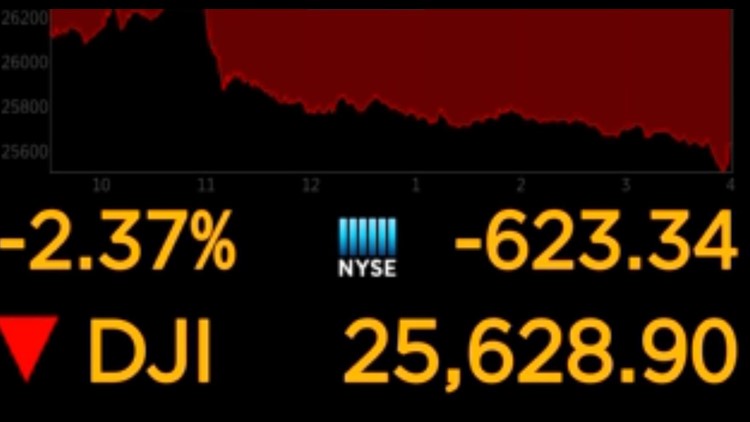Volatile trading rocked the Dow on Friday, after President Donald Trump responded to new retaliatory tariffs from China and criticized the US Federal Reserve.
The stock index fell more than 500 points, or 2%, after Trump tweeted he “will be responding to China’s tariffs this afternoon.”
“We don’t need China and, frankly, would be far better off without them,” he said. He also “ordered” American companies “to immediately start looking for an alternative to China.”
Prior to the market open, China announced new retaliatory tariffs that will impact $75 billion worth of US goods and range from 5% to 10%. The tariffs will also include US oil imports. On top of that, China will resume its 25% tariffs on US car imports. The move was the latest escalation in the ongoing US-China trade war.
US oil prices fell in response, last down 2.1% at $58.67 a barrel.
Stocks, which have been volatile throughout the day, dropped sharply following Trump’s tweets. The S&P 500 and the Nasdaq Composite fell 2.1% and 2.7%, respectively.
The US dollar, measured by the ICE U.S. Dollar Index, dropped 0.5%, and the yield on the 10-year US Treasury rate fell to 1.51%. The yield curve again inverted Friday, meaning that shorter-dated 2-year bonds yield more than longer-dated 10-year bonds. This has been a historic recession indicator.
The market’s volatility gauge, the CBOE Volatility Index, or Vix, shot up by nearly 26%, and CNN’s Fear and Greed index moved from ‘fear’ to ‘extreme fear’.
The trade spat overshadowed the annual Federal Reserve symposium at Jackson Hole, at which Fed Chairman Jerome Powell reaffirmed his pledge to act as ‘appropriate’ in the eye of tricky economic conditions.
Powell acknowledged that the economy had grown more turbulent, adding that fitting uncertainty about trade into the central bank’s framework poses a new challenge. Powell didn’t comment on future interest rate cuts.
Expectations for a quarter-percentage point rate cut in September slipped to 95% from nearly 100% earlier, according to the CME’s FedWatch tool.
Trump, who has long called on the Fed to cut interest rates more aggressively, tweeted “as usual, the Fed did NOTHING.” He added “my only question is, who is our bigger enemy, Jay Powell or Chairman Xi,” referring to China’s President Xi Jinping.”
One analyst called the remarks a “blistering outburst.”
“The market is speculating whether Trump will take direct action to weaken the greenback,” said Jane Foley, senior FX strategist at Rabobank in a note. “This would mark a significant change in policy for the US Treasury and would undoubtedly be met with significant criticism from other G7 nations.”
Dan Suzuki, portfolio strategist at Richard Bernstein Advisors, said “Things are escalating in the wrong direction.”
“It is negative you have this growing pressure that makes the Fed’s job a bit more complicated and slightly increases the pressure to try to remove Jay Powell,” Suzuki said.
Earlier in the day, St. Louis Fed President James Bullard talked monetary policy as the day in Jackson Hole is getting under way. Bullard spoke out in favor of interest rate cuts on CNBC given the recent inversion of the Treasury yield curve.
In the minutes from last month’s central bank meeting, released Wednesday, the July rate cut was described a mid-cycle adjustment rather than the beginning of an easing cycle.



